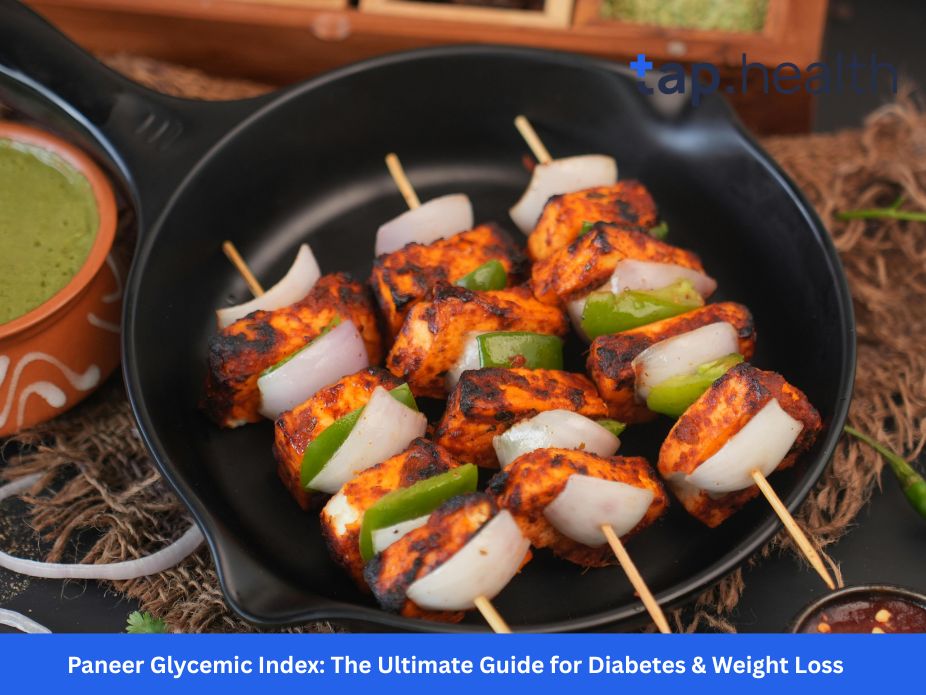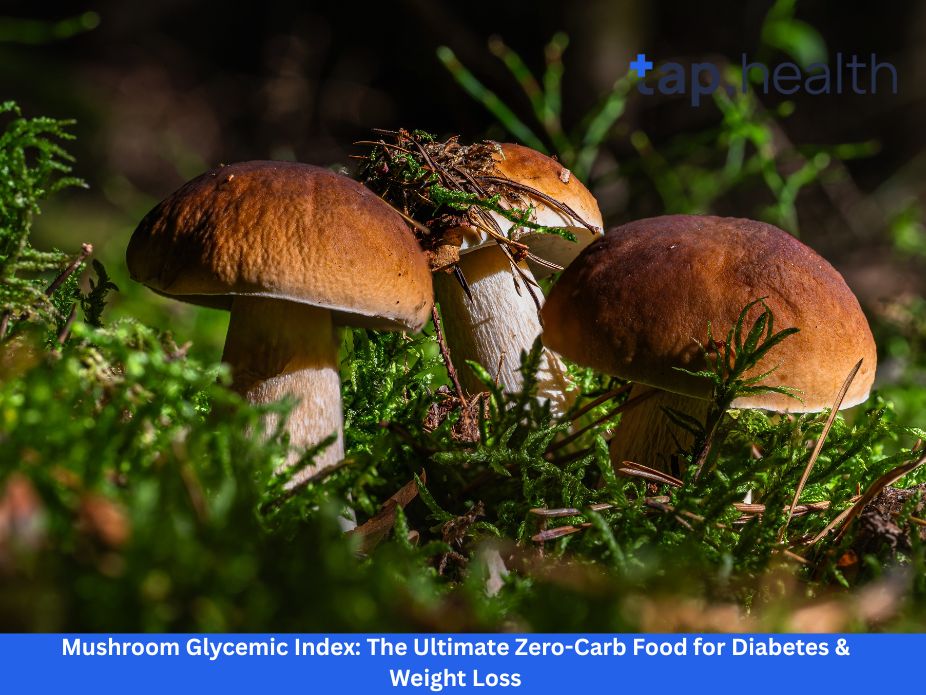Let’s talk about a common breakfast scene in many Indian homes. You’re hungry, maybe in a hurry, and you reach for something quick. A slice of toast, a bowl of cereal, or maybe a paratha.
But an hour later, you feel it—that energy slump. Your stomach rumbles, and your brain feels foggy. You’re hungry again, even though you just ate.
Now, imagine a different scenario. You have a couple of pieces of paneer, maybe in a salad or sautéed with spices. You feel satisfied, full, and your energy stays steady for hours.
What’s the difference between these two experiences? It all comes down to one powerful concept: the Glycemic Index (GI).
And when it comes to paneer, the story is surprisingly simple and incredibly good news. If you’re managing diabetes, trying to lose weight, or just want to make smarter food choices, understanding the glycemic index of paneer is essential.
Let’s dive into why this beloved dairy product is a true superstar for your health.
What is the Glycemic Index? The “Speedometer” for Carbs
Before we talk about paneer, let’s get one thing clear. What exactly is the Glycemic Index?
Think of the carbohydrates in your food as cars on a highway leading to your bloodstream. The Glycemic Index is like a speedometer for those cars.
It’s a scale from 0 to 100 that measures how fast and how high a carbohydrate-rich food makes your blood sugar (glucose) levels rise.
Here’s the simple breakdown:
- Low GI (55 or less): The Slow Lanes. These foods break down slowly, giving you a steady, gentle energy release. This keeps you full and energized for longer. Examples: apples, lentils, whole oats.
- Medium GI (56 to 69): The Moderate Lanes.
- High GI (70 and above): The Fast Lanes. These foods break down incredibly fast, causing a rapid blood sugar spike followed by a crash. This leaves you tired and hungry. Examples: white bread, sugary drinks, potatoes.
The goal for stable energy and good health is to spend more time in the “slow lanes.”
The Big Reveal: What is the Glycemic Index of Paneer?
Now, for the answer you’ve been waiting for.
Paneer has a glycemic index of zero.
That’s right. Zero.
Let that sink in for a moment. On a scale of 0 to 100, paneer is all the way at the very beginning. It has no measurable impact on your blood sugar levels.
Why is the GI of Paneer Zero?
The reason is beautifully simple. The Glycemic Index only measures the impact of carbohydrates on blood sugar.
Paneer is made by curdling milk and separating the whey. What’s left is mostly protein and fat. It contains virtually no carbohydrates.
Since there are no carbs to break down into sugar, eating paneer does not raise your blood glucose. It’s like it doesn’t even register on the blood sugar radar.
Paneer vs. Other Common Foods: A GI Showdown
To truly appreciate how good paneer is, let’s compare it to other common foods.
- Paneer (GI = 0) vs. Whole Wheat Bread (GI ~74): Your morning toast sends your blood sugar soaring, while paneer leaves it perfectly steady.
- Paneer (GI = 0) vs. Brown Rice (GI ~68): Even healthy whole grains raise blood sugar. Paneer does not.
- Paneer (GI = 0) vs. An Apple (GI ~36): An apple is a low-GI fruit, but it still has natural sugars. Paneer has none.
- Paneer (GI = 0) vs. Sweet Potato (GI ~70): A food often seen as “healthy” can still be high-GI, unlike paneer.
This makes paneer one of the safest, most blood-sugar-friendly foods you can eat.
But Wait! How Paneer Affects Blood Sugar in Real Meals
This is where the story gets even more interesting. While paneer alone doesn’t raise blood sugar, what it does when paired with other foods is its real superpower.
You don’t typically eat paneer completely alone. You add it to your roti, your palak, or your salad. And in this role, paneer becomes a blood sugar manager.
The “Slow-Down” Effect: Paneer’s Real Magic
When you add paneer to a carbohydrate-rich food, something wonderful happens.
The protein and fat in the paneer slow down the digestion process. They act like a speed bump in your digestive system. The carbohydrates from your meal take much longer to break down and enter your bloodstream.
So, that rapid sugar spike you might have gotten from a plain roti or a bowl of rice? Paneer helps flatten that curve.
Example: A plain whole-wheat chapati might have a medium GI. But when you eat it with palak paneer, the protein and fat in the paneer slow the digestion of the chapati’s carbs, effectively lowering the meal’s overall glycemic impact.
Is Paneer Good for Diabetes?
Given this “slow-down” effect, is paneer good for diabetics?
Yes, paneer is an excellent food for people with diabetes.
Here’s why:
- Zero Blood Sugar Impact: Paneer itself will not raise your blood glucose.
- Prevents Spikes from Other Foods: It helps manage the blood sugar response of the entire meal.
- Promotes Satiety: Protein is the most filling nutrient. Eating paneer helps you feel full and prevents overeating and unhealthy snacking later, which is crucial for diabetes management.
The key, as with any food, is portion control and choosing healthy cooking methods.
Beyond Blood Sugar: The Nutritional Benefits of Paneer
Paneer’s benefits go far beyond its zero glycemic index. It’s a nutritional powerhouse.
A Protein Powerhouse
Paneer is packed with high-quality protein. Protein is essential for:
- Building and repairing muscles.
- Keeping you feeling full and satisfied.
- Supporting a healthy metabolism.
Rich in Healthy Fats and Calcium
- Fats for Energy: The fats in paneer provide a slow-burning source of energy and help your body absorb important vitamins.
- Calcium for Bones: Paneer is an excellent source of calcium, which is vital for strong bones and teeth.
A Source of Conjugated Linoleic Acid (CLA)
Paneer made from grass-fed milk contains CLA, a type of fat that some research suggests may help with weight management and have anti-inflammatory properties.
How to Use Paneer Wisely in Your Diet
Knowing that paneer has a GI of zero doesn’t mean you should eat it in unlimited quantities. It is still a calorie-dense food. The magic is in using it smartly.
The Golden Rule: Moderation
A little paneer goes a long way. For most people, a serving of 100 grams (about a cup of cubed paneer) per meal is a healthy and satisfying amount.
Smart Pairings for Blood Sugar Control
Use paneer strategically with medium or high GI foods to create a balanced, low-glycemic meal.
- Add it to Salads: Cube paneer and add it to a leafy green salad. The protein and fat will slow the digestion of any carbs from veggies like corn or carrots.
- Pair with Roti/Rice: Always eat your roti or rice with a paneer-based sabzi. The combination is far better for your blood sugar than eating the carbs alone.
- Healthy Snack: A small slice of grilled or pan-fried paneer with spices makes for a satisfying, zero-GI snack.
Healthy Cooking Methods
- Grilling or Pan-Frying: Use a non-stick pan with just a teaspoon of oil.
- Adding to Curries: Opt for tomato-based gravies (like matar paneer) instead of heavy, cream-based ones (like shahi paneer).
- Steaming or Adding to Soups: A healthy way to enjoy its texture without added fat.
What to Avoid
- Deep-Frying: Avoid making paneer pakora or deep-frying it, as this adds a lot of unnecessary calories and unhealthy fats.
- Creamy Gravies: Be mindful of recipes that use large amounts of cream, as this can turn a healthy food into a high-calorie one.
The Final Verdict: Is Paneer a Superfood for Blood Sugar?
So, what’s the bottom line on the glycemic index of paneer?
Paneer is a unique food with a glycemic index of zero. It does not raise blood sugar on its own and can actually help lower the glycemic impact of the other foods you eat with it.
For people with diabetes, weight watchers, and anyone looking for stable energy, paneer is a nutrient-dense, satisfying food that can be a valuable part of a balanced diet.
Embrace the paneer. Use it wisely, respect its potency, and enjoy the rich, stable health it can help you build.
Frequently Asked Questions (FAQs) on Paneer Glycemic Index
Q1: Can a diabetic patient eat paneer every day?
A: Yes, a diabetic patient can consume paneer daily as part of a balanced diet. Its zero GI and high protein content are excellent for blood sugar control. A typical serving size is 100 grams (about a small bowl). It’s important to account for its calories and pair it with vegetables and whole grains.
Q2: Does paneer increase insulin levels?
A: No, paneer does not cause a spike in insulin. Insulin is released in response to rising blood sugar. Since paneer has no carbs and doesn’t raise blood sugar, it does not trigger a significant insulin response. The protein in paneer can even promote the release of hormones that increase feelings of fullness.
Q3: Is paneer good for weight loss?
A: Yes, in moderation, paneer can support weight loss. It is very high in protein, which is the most satiating nutrient. This helps keep you feeling full, reducing overall calorie intake. However, because it is calorie-dense, portion control is key.
Q4: What is the glycemic index of palak paneer?
A: The glycemic index of the entire dish depends on the recipe. Palak (spinach) has a very low GI, and paneer has a GI of zero. If no high-GI ingredients (like sugar or too much potato) are added, the dish will have a very low overall glycemic impact, especially when eaten with roti.
Q5: Which is better for diabetics: tofu or paneer?
A: Both are excellent high-protein, low-carb options. Paneer (from dairy) has more calcium and saturated fat. Tofu (from soy) has more iron and is lower in fat. For a diabetic, both are great choices; the decision can be based on personal preference, dietary restrictions (like lactose intolerance), or whether you follow a plant-based diet.
Q6: How much paneer per day is safe?
A: For a healthy adult, 100-150 grams of paneer per day is generally considered a safe and beneficial amount. It’s always best to consult with a doctor or nutritionist for personalized advice, especially if you have specific health conditions like kidney issues.
Q7: Is paneer bad for cholesterol?
A: Paneer contains saturated fat, which was once thought to be bad for cholesterol. However, recent research suggests that the effect of dairy fat on heart health is complex and may not be as harmful as once believed, especially when consumed as part of a balanced diet. For most people, moderate consumption of paneer is fine. Those with existing high cholesterol should consume it in strict moderation and opt for low-fat versions if available.


